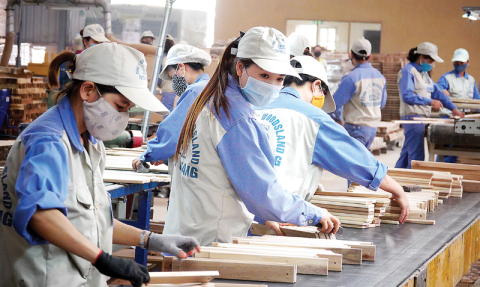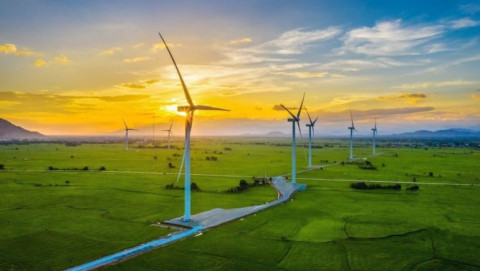Practical applications of carbon credits in the economy. Part XVI: Spirulina algae helps green the livestock value chain
- 168
- Socially Responsible Enterprise
- 10:09 09/08/2024
DNHN - Combining the development of carbon credits from Spirulina algae with greening the livestock value chain opens up potential opportunities, enhancing sustainability while reducing emissions and protecting the environment.
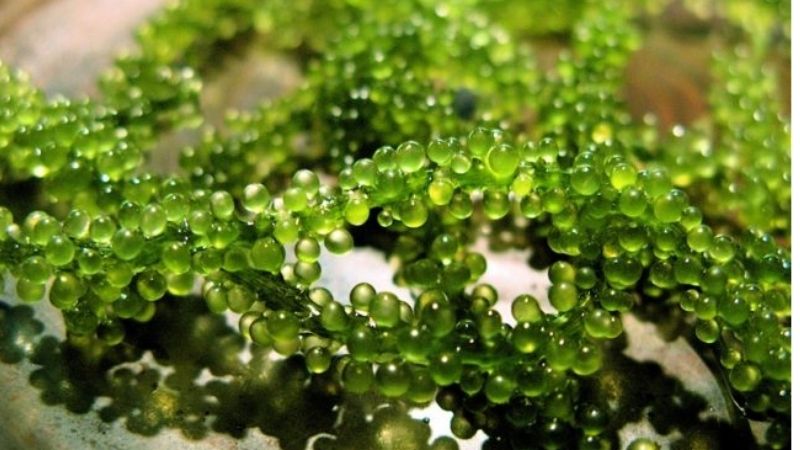
Enhancing the sustainable livestock value chain and developing a low-carbon economy
Enhancing the sustainable livestock value chain and developing a low-carbon economy is becoming an important trend in modern agriculture. Integrating solutions like Spirulina into the livestock value chain not only improves feed quality and animal health but also contributes to reducing greenhouse gas emissions. Spirulina, with its efficient CO2 absorption and rich nutritional content, helps optimize resource use and minimize waste. By applying advanced technologies and methods in livestock farming, the industry can reduce production costs while promoting sustainable development and environmental protection. Steering the livestock value chain towards a low-carbon economy not only meets the demands of the global market but also contributes to achieving sustainable development goals, bringing long-term benefits to both the community and the planet.
Greening the livestock value chain and developing carbon credits from Spirulina algae is a significant step in improving sustainability and reducing the environmental impact of the livestock industry. Spirulina algae, with its effective CO2 absorption capability, not only provides a rich source of nutrients for farm animals but also helps reduce greenhouse gas emissions. When Spirulina is integrated into the livestock value chain, it helps reduce carbon emissions, thereby creating opportunities for developing carbon credits—a system that allows organizations and businesses to certify and trade greenhouse gas emission reductions.
In this way, the livestock industry not only enhances production efficiency and animal health but also contributes to environmental protection and the development of a low-carbon economy. The application of Spirulina not only supports sustainability in the livestock value chain but also promotes crucial initiatives in mitigating climate change and fostering green development.
The application of Spirulina in the livestock industry brings significant benefits. First, Spirulina provides a rich source of nutrients, including proteins, vitamins, minerals, and essential amino acids needed for the growth of farm animals, thereby improving feed quality and enhancing their health.
Second, the antioxidant and antibacterial components in Spirulina help strengthen the immune system of animals, reducing the risk of diseases and enhancing livestock performance.
Third, Spirulina has the ability to absorb CO2 from the environment, contributing to the reduction of greenhouse gas emissions from livestock activities and protecting the environment. Moreover, the use of Spirulina helps optimize resource efficiency, reduce feed waste, and increase efficiency in the livestock process. Finally, Spirulina not only supports animal health but also promotes a sustainable and cost-effective livestock system. Overall, integrating Spirulina into the livestock value chain provides comprehensive benefits for health, the environment, and production efficiency.
Therefore, applying Spirulina as animal feed within the current circular economy value chain is not only a comprehensive and feasible solution but also aligns with global sustainable development trends. Spirulina not only brings evident benefits to the climate and environment by reducing greenhouse gas emissions and conserving resources but also contributes to improving economic and social efficiency. The application of Spirulina in the value chain helps improve the quality of livestock products, reduce production costs, and promote sustainable economic development. This is an important step forward, supporting global sustainable development goals while bringing long-term benefits to both the community and the planet.
A breakthrough sustainable solution for the environment and enhancing livestock efficiency
Spirulina algae is emerging as a breakthrough solution for environmental sustainability and enhancing efficiency in livestock farming. With the ability to absorb up to 360 tons of CO2 per hectare per year and containing three times more protein than beef, Spirulina not only provides a rich source of nutrients for animals but also reduces methane emissions by up to 82% in cattle farming. Replacing fish meal with Spirulina in shrimp feed not only improves their health and immune system but also conserves resources, using land 300 times more efficiently and water 1,400 times more efficiently compared to beef production. Spirulina also contributes to sustainable development by utilizing less productive agricultural land and supporting 11 out of 17 United Nations Sustainable Development Goals, paving the way for a greener future for the livestock industry and the environment.

In an interview with Doanhnghiephoinhap.vn, Mr. Phan Van Hai, Director, High-Tech Agriculture Investment and Development Group Joint Stock Company Haicorp, stated that Spirulina platensis has the ability to absorb 360 tons of CO2 per hectare per year and contains high protein content (60-70%) along with essential amino acids, vitamins, minerals, and fatty acids. It is an effective immune regulator for mammals and fish, reducing methane emissions by 82% after 5 months for cattle, replacing 75% of fish meal in shrimp feed, and saving land 300 times and water 1,400 times compared to cattle farming. Recognized by WHO as the best food of the 21st century, Spirulina offers superior benefits for health and the environment.
According to Mr. Hai, the project to apply Spirulina in the shrimp value chain helps reduce emissions, improve productivity and product quality, while reducing production costs, and promoting sustainable development. Spirulina can thrive in both saltwater and freshwater environments, developing under harsh conditions, conserving natural resources, and utilizing less productive agricultural land. This is a positive solution supporting 11 out of 17 United Nations Sustainable Development Goals (SDGs).
Nghe Nhan
Related news
- Practical applications of carbon credits in the economy. Part XV: How are businesses interested in carbon credits?
- Practical applications of carbon credits in the economy. Part XIV: Improving irrigation methods to reduce carbon emissions into the environment
- Practical applications of carbon credits in the economy. Part XIII: Towards the goal of building low-carbon cities in Vietnam
#environmental protection
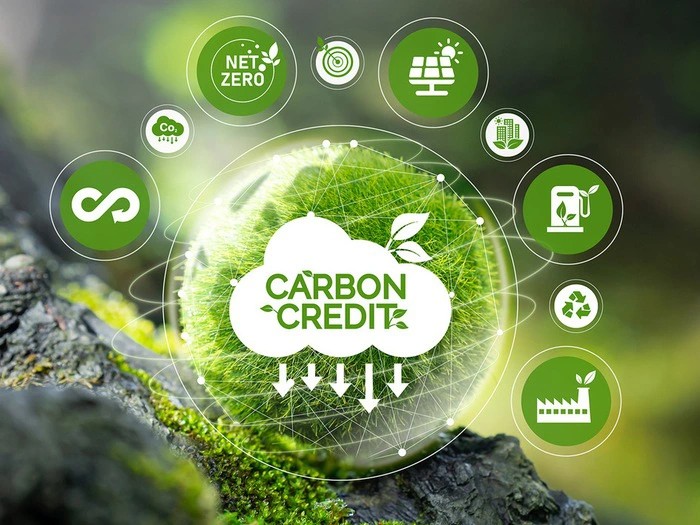
Reducing greenhouse gas emissions and carbon market development to fulfill COP 26 commitments
Vietnam aims to reduce greenhouse gas (GHG) emissions and develop a carbon market, aligning with its COP 26 commitments. This requires close coordination and comprehensive solutions from all sectors and communities.

What can be learned from VinFast's success after becoming the best-selling car brand in Vietnam?
VinFast's market-leading sales in Vietnam in September marked a major turning point, as a domestic electric vehicle brand outpaced international competitors.
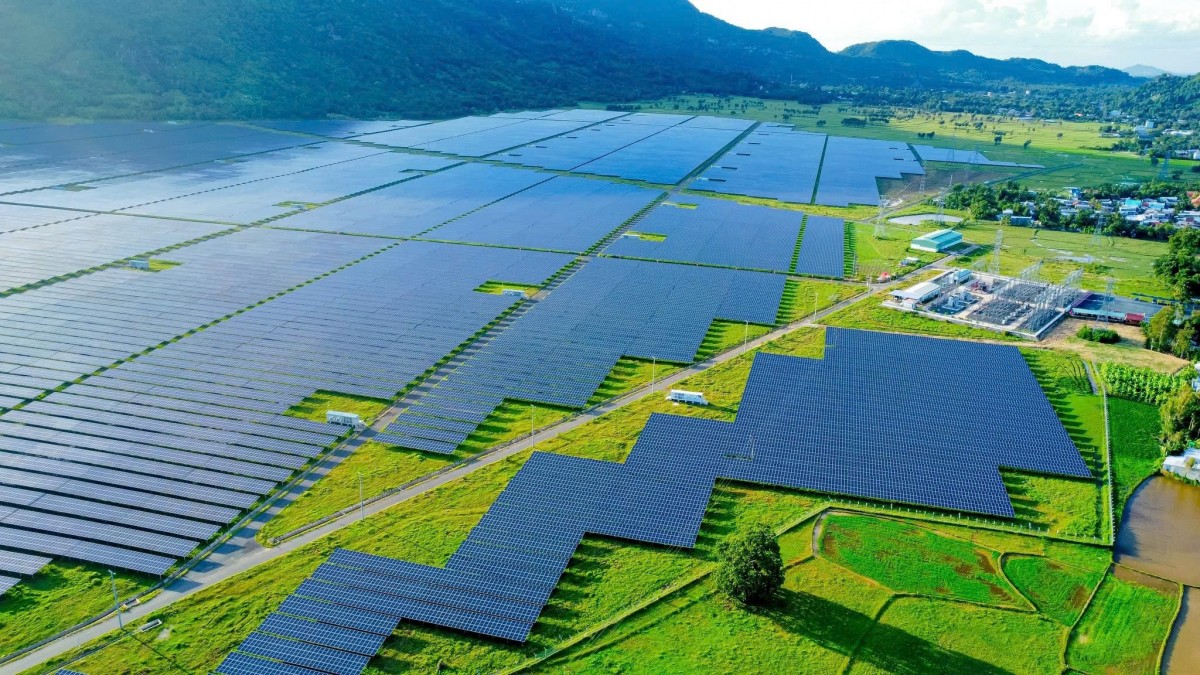
Nurturing life for the future with clean energy
Vietnam has just endured Typhoon No. 3, leaving behind a trail of destruction and loss that makes us all feel small against Mother Nature. It is time for a change, time to nurture and protect our living environment.

Practical applications of carbon credits in the economy. Part XXI:Carboncor Asphalt - An effective solution for Vietnam to achieve net zero emissions
Vietnam is actively implementing green construction solutions to achieve the goal of net zero emissions by 2050. These solutions reduce greenhouse gas emissions and support sustainable development in the construction industry.
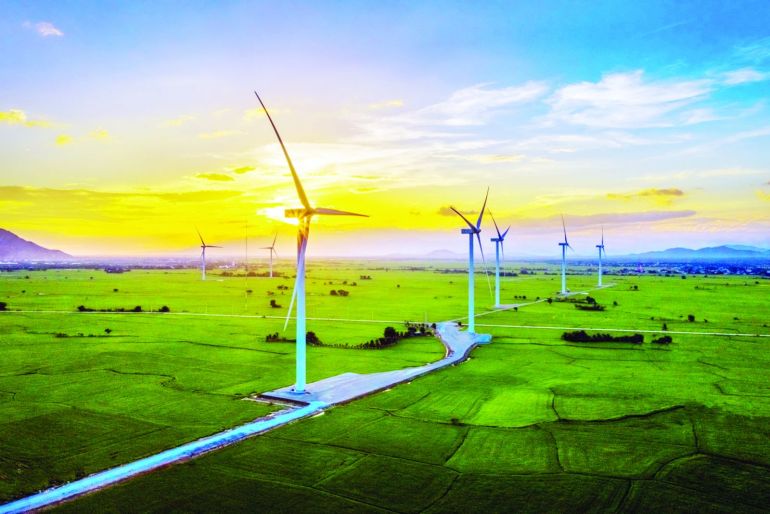
Practical applications of carbon credits in the economy. Part XI: Bridging policy and strategy for the carbon credit market
To develop the carbon credit market, the Government and businesses must improve cooperation and communication. The Government needs to provide clear policies, while businesses must adopt emission reduction strategies and leverage carbon credits.

Yen Bai: Implementing the plan to manage and eliminate ozone-depleting substances and greenhouse gases
The People's Committee of Yen Bai province has just issued document No. 3005/UBND-TNMT on the implementation of the National Plan for the management and elimination of ozone-depleting substances and controlled greenhouse gases.
Đọc thêm Socially Responsible Enterprise
When artists do business – livelihood is no poetry!
A series of indictments, arrests, and bankruptcies among artists has sounded a serious alarm.
Hanoi’s economy grows 7.92% in first nine months of 2025, FDI surges nearly threefold
Hanoi maintained robust growth momentum in the first nine months of 2025 with GRDP up 7.92% year-on-year, driven by strong services and construction sectors.
Vietnam’s strong gdp growth fails to ease labor market distress
As the year draws to a close, the pressing challenge for businesses and policymakers is how to rebuild worker morale, retain top talent, and stabilize employment amid lingering uncertainty.
Vietnam ramps up efforts to lift EU “Yellow Card” on Illegal fishing
Prime Minister Pham Minh Chinh has called for intensified and coordinated efforts to have the European Commission’s “yellow card” on Vietnam’s fisheries removed within this year.
Quang Tri calls for investment in wind power plant project worth over VND 1,100 billion
The People’s Committee of Quang Tri Province has officially announced the Hưng Bắc Wind Power Plant Project as part of its investment invitation portfolio.
Hanoi receives two million visitors during the four-day National Day holidays
From August 30 to September 2, Hanoi received around 2.08 million visitors during the four-day National Day holidays , three times higher than the figure in the same period last year, the municipal Department of Tourism reported.
Ca Mau gradually makes its mark on the national tourism map
By 2025, Ca Mau aims to attract 8.4 million visitors and achieve a total revenue exceeding 8,585 billion VND, contributing to the province's double-digit growth target.
UNDP Resident Representative hails Vietnam as an emerging economic powerhouse
Millions of people have been lifted out of poverty, hunger has been eliminated, and the economy has maintained consistent growth rates of over 6 per cent, UNDP Resident Representative in Vietnam Ramla Khalidi remarks.
Alpha Books Chairman Nguyen Canh Binh: The survival weapons of Vietnamese entrepreneurs in the age of AI.
Alpha Books Chairman Nguyen Canh Binh shares three essential lessons to ensure the survival and growth of Vietnamese entrepreneurs in the digital age: creativity, connection, and collective intelligence.
Mr. Le Viet Thang, CEO of 1Office: "Don’t use old solutions for new ai challenges"
As artificial intelligence (AI) reshapes the global technology landscape, Vietnam is taking decisive steps to establish a National AI Research and Development Center, alongside the National Data Center.




